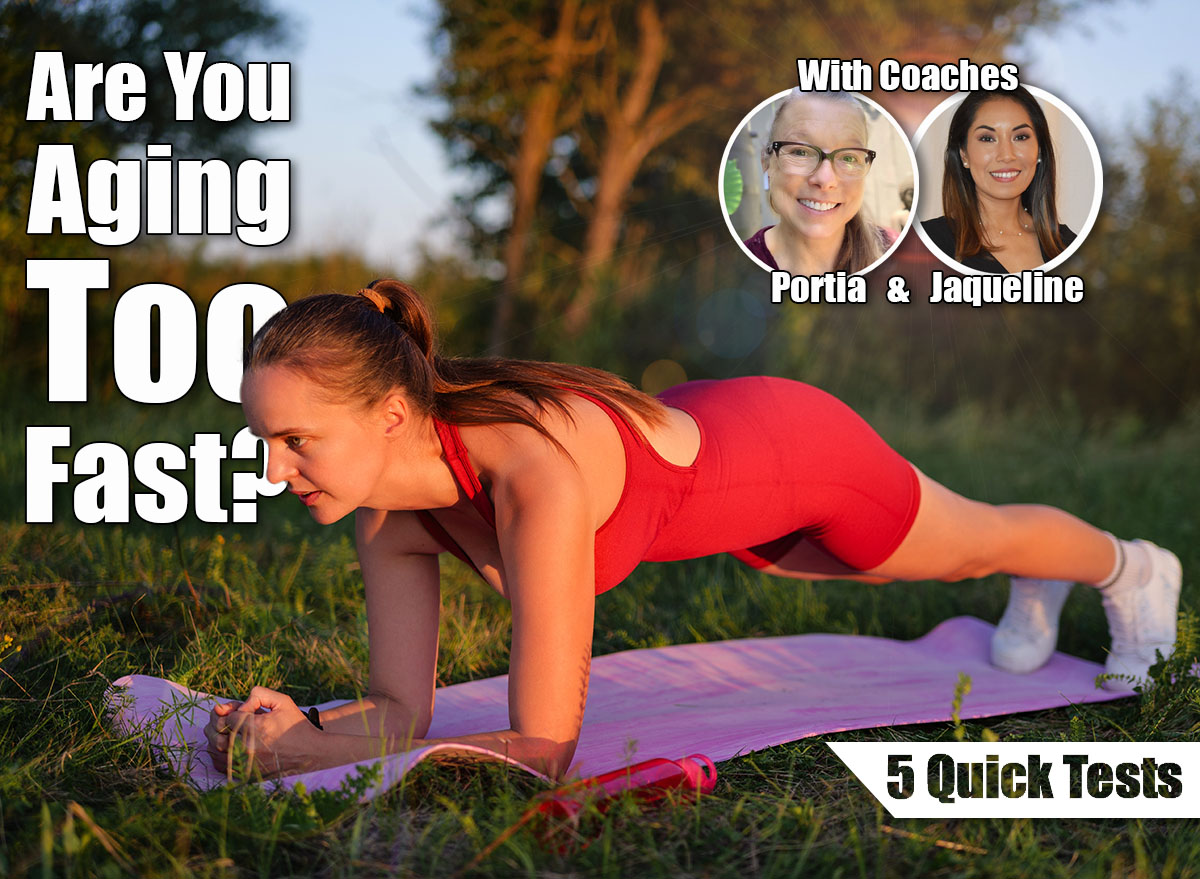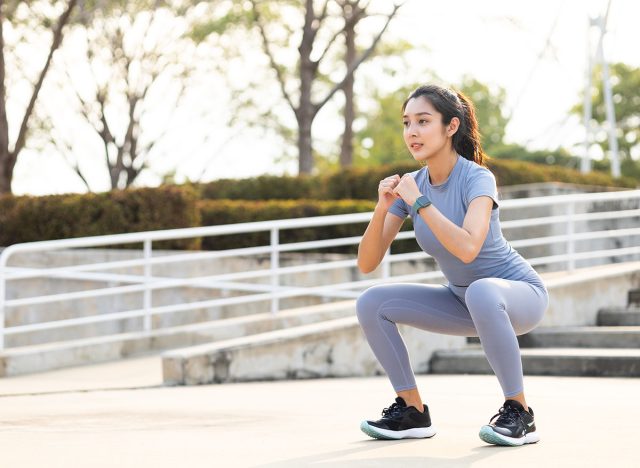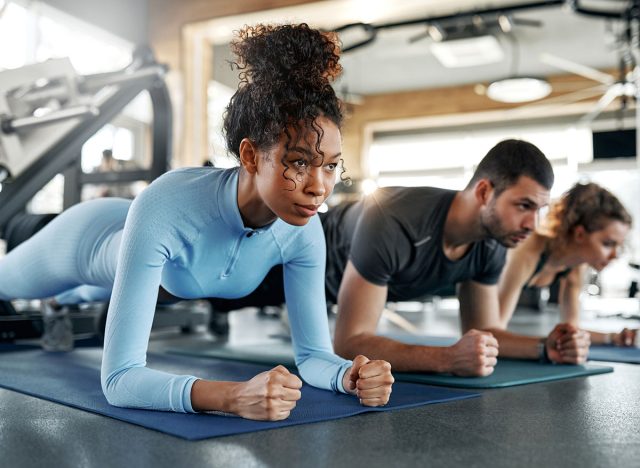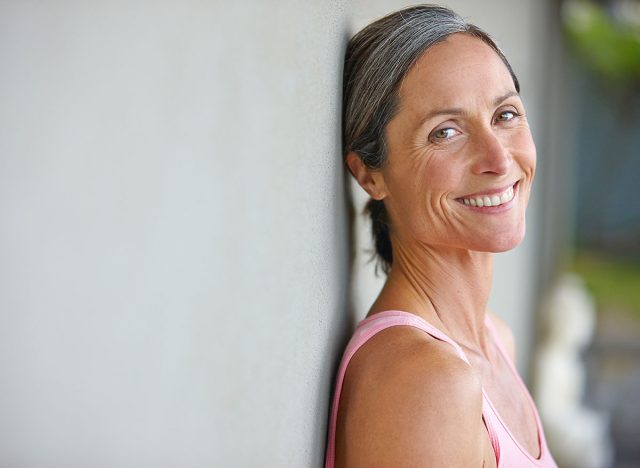5 Quick Tests To See if You’re Aging Too Fast After 40

As you age, your body naturally changes. You lose lean muscle mass and strength, bone density declines, and it’s easier to put on dreaded belly fat—ugh. It’s important to stay at the top of your game and be aware of these changes so you maintain a strong, resilient body for years to come. We spoke with Pilates guru Portia Page, Balanced Body Educator, CPT, NCPT, PMA, ACE and AFAA certified and Jaqueline Gavino, MPH, CHES, exercise physiologist at the Pritikin Longevity Center, who share five quick tests to see if you’re aging too fast after 40.
Shoulder Flexion Test
“This test evaluates flexibility in your shoulder joints,” says Page.
- Begin seated and stand tall, back pressed flat against a wall.
- Lift your arms straight overhead.
- Try to touch the wall with the backs of your hands without arching your back.
Scratch Test
“This test checks the range of motion and mobility in your shoulders,” Page notes.
- Stand tall.
- Reach one arm over your shoulder and down your back as far as you’re able to.
- Reach your other arm up your back from the bottom.
- Try to overlap or touch your fingers.
- Repeat on the other side.
Squat Test

“A common and simple test to assess lower body strength is the squat test, which evaluates both muscular strength and endurance in the legs, particularly the quadriceps, hamstrings, and glutes,” says Page.
- Stand tall, feet shoulder-width apart and toes pointed slightly outward.
- Keep your back straight, chest tall, and arms extended straight ahead of you.
- Bend at the hips and knees to lower into a squat until your thighs are parallel to the ground.
- Push through your heels to rise back up to the start position.
- Complete as many full squats as you’re able to with solid form until fatigue.
Plank Hold Test

“Regularly testing your plank endurance can help gauge improvements in core strength, which is fundamental for overall fitness and injury prevention,” Page points out.
- Assume a forearm plank position: Place your forearms on the floor with elbows under your shoulders and arms parallel to your body, shoulder-width apart.
- Keep your body straight from your head to your heels.
- Activate your core, legs, and glutes.
- Hold the plank with solid form for as long as possible, aiming for at least 30 seconds. As you build strength, increase the hold time to 1 to 2 minutes or longer.
Static Posture Check

“Postural changes can be early signs of musculoskeletal aging,” says Gavino.
- This test is simple: Stand against a wall to see if your head, shoulders, and hips align.
How Training and Lifestyle Changes Can Improve Your Results
When it comes down to it, consistency is king if you want to see noticeable results.
“Strength training, balance drills, stretching, and posture correction exercises all lead to measurable improvements within weeks to months. For example, practicing squats and resistance training improves lower-body strength and ease with daily activities. Yoga, tai chi, or targeted balance drills enhance single-leg balance and reduce fall risk. Mobility and stretching routines restore shoulder and hip range of motion, improving comfort and posture,” Gavino points out. “We see clients regain measurable function and confidence when they combine structured exercise with healthy lifestyle changes. These tests don’t just measure aging, they give you a roadmap for how to age well.”
Looking for more easy ways to lose fat? Here’s How Long Your Walking Workout Should Be To Shrink Belly Fat.